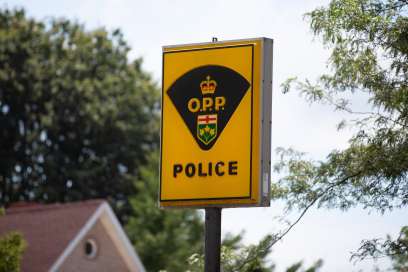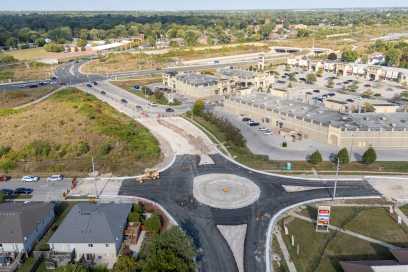Local Film Examines The Trauma Windsor Essex Nurses Face
Wednesday September 9th, 2020, 4:02pm
Hello time traveller!!
This article is 1834 days old.
The information listed below is likely outdated and has been preserved for archival purposes.
A new short film takes a look inside the minds of local nurses suffering from post-traumatic stress disorder to highlight the range of help available.
‘No Room to Grieve,’ a short film directed by Jendo Shabo and Helios Films, and produced by the Ontario Nurses’ Association Local 8, examines the “long-term impact of everyday trauma experienced by registered nurses and health-care
professionals while on the job,” according to the film’s promotional material.
“Those suffering from PTSD often have little to no power over the trauma, making each attack an unpredictable nightmare,” Shabo said last week when a trailer for the film was released.
A recent survey conducted by the Canadian Federation of Nurses Unions found that 20 per cent of registered nurses suffer from post-traumatic stress disorder. ONA Local 8 Coordinator Susan Sommerdyk, RN, says the film shows the lasting impact of chronic workplace trauma, and reminds nurses and health-care providers that help is available.
“Workplace trauma –whether inflicted by workplace violence or the sometimes-harrowing patient care situations we experience on the front lines of health care – has a lasting effect,” says Sommerdyk. “The reality for those of us on the front lines is that there truly is no time to process the events that we experience – we just carry on because we have to.”
“This short film provides an insider’s view of the reality of our experiences and the trauma that can inflict.”
ONA president Vicki McKenna says the “film is a valuable reminder to those suffering in silence that help is available.”
In addition to the film, ONA Local 8 is launching a webpage dedicated to helping front-line registered nurses access support if they are suffering from PTSD.
“Help is available,” Sommerdyk says, “And I want to ensure that no one feels they are alone.”
You can watch the film online at Helios Films’ website.
Director Q&A
Q – windsoriteDOTca: Describe for us how you showed (through both video and audio – such as the underwater sounds) the isolation and trauma nurses with PTSD face, from a directorial and cinematographic perspective.
A – Jendo Shabo: I wanted to make sure the film was authentic in every way possible. After discussing the idea with healthcare professionals and victims of PTSD, I thought of modelling the film’s structure and techniques after the symptoms.
PTSD attacks are unpredictable. They can happen anywhere and anytime–even a nice, comforting shower can turn into a living nightmare. In this film, we watch Emma suffer from a dissociative disorder known as depersonalization-derealisation. It’s as if you’re watching your thoughts, feelings, and memories from a distance with no power or influence on what unfolds. Reality falls into a weird, dreamlike haze where time is fluid, it can slow down, speed up, reverse, just as unpredictable as the whole attack in the first place.
Sound plays a key role in the film’s storytelling, as her realities begin to blur and the attack takes over. It lets you feel Emma’s focus shifting. The constant clash of running water and surgery makes it hard to predict when or if Emma will get control. Eventually, the calming water is overtaken and distorted by the sounds from her traumatic event – failing to resuscitate a dying child, the liquid from his bleeding wound being another trigger.
Visually, I wanted to immerse the viewer in Emma’s world right away, the first shot opening the door and inviting them in. Much like the sound, the intro’s unorthodox use of quick fades to black represents Emma’s shifting focus, trying to break or blink out of the traumatic memory before it gets worse. The moments of complete darkness in between each shot helps create the same unpredictable nature of PTSD attacks.
There’s so little dialogue, and none from the main character, that I wanted the visuals and sound to help carry the storytelling load. The final piece was the music. I was lucky to work with Andrew Seguin and Marcello Morle to create the score. It captures the looming feeling of dread Emma feels in the beginning, just before the attack takes hold. When the shots begin to speed up and the surgery begins, the music becomes bombastic, repeating, and unpredictable – perfectly complimenting the film’s pacing all throughout.
Q – windsoriteDOTca: How do you feel this film will help the general public to become more aware of the trauma nurses face?
A – Jendo Shabo: Before our campaign with ONA, I had no idea what kind of chaos nurses deal with. Video is the most effective method to convey information with emotion, so my goal was to effectively portray those horrors in easily digestible ways. After watching “No Room to Grieve,” I’m hoping that the next time you’re sitting there in the waiting room, feeling ignored or not taken care of, they could be trying to save a dying child’s life in the next room, potentially the first of many that shift. Is complaining about your wait really the best idea? Everyone worries about their own emergency, nurses have to worry about everyone else, leaving no time to deal with their own problems.
Q – windsoriteDOTca: Thinking about the title of the film, do you think this film will give those suffering in silence an opportunity to grieve?
A – Jendo Shabo: Representation is important, and it’s definitely cathartic to see something you struggle with alone finally being talked about and recognized by your peers. Thankfully, that seems to be the response from nurses so far.

























